
He sat in the old cinema in Bolton, clutching the arms of the once-silky, faded red seat as John Barry’s James Bond theme started, accompanied by the huge screen showing the dark grey rifled barrel of the would be assassin trying to shoot our hero… and being killed by a turning 007, whose gun, though smaller, was quicker.
The ‘ladies’ gun’ Beretta said it all as far as I was concerned. Agile, stylish and highly concealable… It could almost have been the symbol of new and 1960s Britain in a post-colonial world, finding its place in a Europe that had changed beyond recognition in the past fifty years.
For me, age ten, the awareness of most of that came later. At the time, it was just attraction.
Heady stuff. I’ll swear my skin is taking on a thin sheen of excitement just remembering it…
Dum….dum… dum, dum… ding, digger ding, ding, ding, ding….
Utterly unmistakable, heart pumpingly ravishing… the entry to a new, faster and more exciting life. For the two hours of the film, at least…

And the Aston Martin DB5? (Image from eBay – thank you) Wow… had one for Christmas. Wore the ejector seat to a frazzle. Everyone I hated got shot out of that roof. Never did get round to getting the real thing…
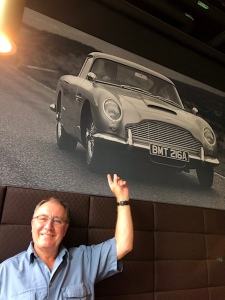
See, look… you can tell by the regret in that smile.
So, other than a bit of self-indulgent time travel, what’s this all about?

We’re at Berlin’s Spionage museum. A modern, hi-tech ‘experiential’ place that’s dedicated to the history of spying and its gadgets.
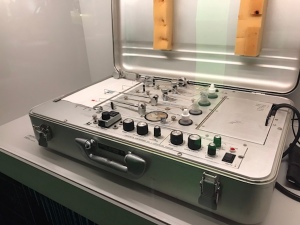
Although it is based on the Cold War era, it’s for children of all ages, and at least half those present are reliving their youth, if not childhood, like me.

Most of the museum is about other things than 007, but the Germans of this fine city have given over a lot of the final hall to our British hero. Ironic, really, when we seem hell bent on leaving behind such international friendship; especially in Berlin, a city with a bitter history of ‘walls’.

The Deutsches Spionage Museum, to give it its full name, is in Potsdamer Platz; one of the main hubs of this spread-out metropolis. The black and white photo above (from the Sony Centre’s own notice boards) shows what was left of the once-vibrant district at the end of the war, after the bulldozers had cleared the rubble.

Like the rest of Europe, it rose from the ashes of WW2, assisted by credit from the USA’s Marshall Plan. In more recent times, the Sony Centre (above) became one of the largest modern construction projects in Europe. It opened in 2000.
 Berlin is no stranger to spying. The act of dividing it between the British, American, French and Russian powers at the end of the war placed it at the frontier of what was to become the Cold War. A continued exodus from east to west Germany resulted in the (literally) overnight creation of the Berlin Wall on the 13 August 1961.
Berlin is no stranger to spying. The act of dividing it between the British, American, French and Russian powers at the end of the war placed it at the frontier of what was to become the Cold War. A continued exodus from east to west Germany resulted in the (literally) overnight creation of the Berlin Wall on the 13 August 1961.
Families, businesses and lives were suddenly divided, in some cases for decades, as the wall reached nearly a hundred miles in length and cut off West Berlin, completely…
The Cold War years saw an escalation of spying and its associated technologies. The museum highlights many of these, but begins with the ancient principles of encryption.

Since the time of the ancient Greeks, devices have been used to convert one message to another. The museum shows different tools in use in the ancient world, including the use of a belt wrapped around an exactly sized stick so that a different message was revealed by the spiralling text. Anyone not possessing the correct stick would not get the correct message.

One of the early manual coding devices was the use of a ‘slide-rule’ mechanism that allowed a fixed set of small windows (the black piece above) to reveal a hidden message from the set of variable sliders on which it sat. There were hundreds of black ‘master-pieces’, so decoding such messages without the right key was practically impossible.
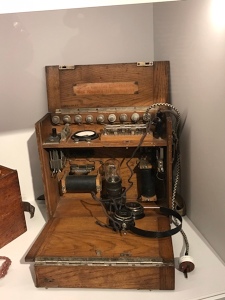
In the 20th century, communication had ceased to be by courier and was almost always electronic. The exhibition shows several of the earliest portable radio sets – which were an essential part of the Allies’ work behind the lines.

Some of the early military sets had a degree of security encoding within them.
The combination of radio communications and encoding led to the famous German Enigma Machine.
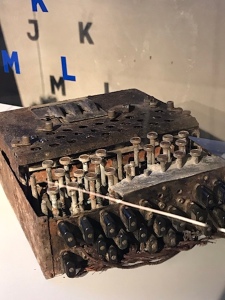
The Enigma came in two versions: one for command transmission, the other for field interpretation. Variable rotors were used to give millions of combinations without the operators being involved in the encoding.

It’s appropriate to be writing this (though entirely accidental) in a hotel room in Berlin on the day that the Bank of England have announced that Alan Turing – the mastermind that cracked the Enigma and went on to establish much of what became Britain’s computer science sector – is to be the new face on the £50.00 note. Richly deserved and long overdue…
But spying wasn’t only about sending secret messages. It was also about taking photographs.

In an age before digital processing, the race was on to produce smaller and better cameras that could be concealed and which would operate reliably in low-light situations, if necessary.

Sometimes, images were taken using concealed lenses designed to be integrated into buildings. East Germany and the Soviet spymasters led the field in this
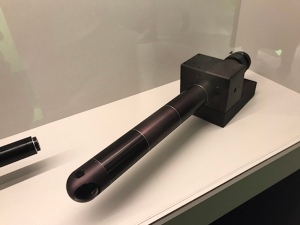 And not just images, but sound also needed to be recorded. The development of advanced recorders for this market led on to great advances for the general use of sound recording, such as this Nagra SNS recorder in a briefcase – revolutionary at the time and subsequently a standard in quality and portability.
And not just images, but sound also needed to be recorded. The development of advanced recorders for this market led on to great advances for the general use of sound recording, such as this Nagra SNS recorder in a briefcase – revolutionary at the time and subsequently a standard in quality and portability.

Of course, weaponry features in the tech needed by spies. Sometimes that takes an unexpected form. This Russian ‘frogman’ is equipped with an underwater ‘scooter’ and a bomb…
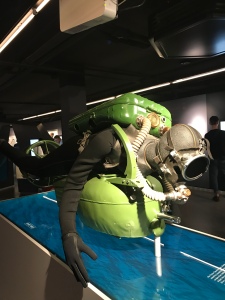
We visited the Spionage on a day when the museum was filled with children, so many of the interactive visits were crowded and unavailable. We left them to it, remembering, fondly…
Finishing off with a friendly look at our own James Bond, we settled for a coffee.

Directly outside the museum there is a single stretch of the Berlin Wall remaining. It’s popular for visitor photographs.

The place of the actual wall is marked by a line of twin cobbles that runs through the whole city; ensuring that the hateful wall is never forgotten and ensuring that Berlin always remembers its post-Nazi dedication to peace and international diplomacy.

We wish it well. It’s one of our favourite cities.

The hated wall fell in 1989. West Germany had a long-standing plan to reunify the country and set about it immediately – regardless of the cost.
©Stephen Tanham


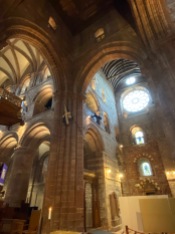








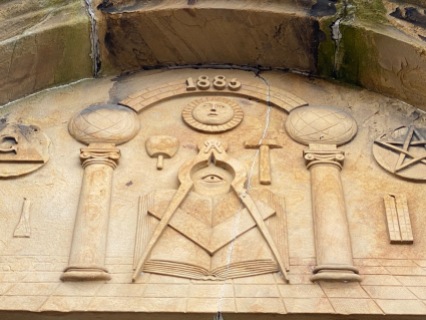
















I think we should all live one of our dreams at least once…
LikeLiked by 1 person
Thank you, Jaye. I agree, dreams are important things to keep alive x
LikeLiked by 2 people
This can be hard to do when so much time passes, but somehow, they never seem to die, do they?
LikeLiked by 1 person
They seem to be important ‘flames’; part of our aliveness.
LikeLiked by 1 person
Reblogged this on anita dawes and jaye marie.
LikeLiked by 1 person
Reblogged this on Sue Vincent's Daily Echo.
LikeLiked by 1 person
Thank you, Sue x
LikeLiked by 1 person
Excellent post Steve and so very interesting. Brings back many memories. I agree about Alan Turin a man who even though brilliant was much maligned and miss treated by his peers and an ignorant law.
Great pictures.
LikeLiked by 1 person
Thank you, Willow. Yes, Alan Turing has only recently been treated with the dignity and the respect he has always deserved. Glad you liked it! x
LikeLike
I really did , thank you for inviting us all along. 😁💜
LikeLiked by 1 person
It’s a joy to have such a great bunch of kids! ❤️
LikeLike
Bless 💜
LikeLiked by 1 person
Good read, that, Steve. Love spy stuff, and particularly fascinated by cyphers. What an interesting place to visit!
LikeLiked by 1 person
Thanks, Michael. Well worth the entry.. and then there’s the Pergamon museum, which takes a day just to walk around…
LikeLiked by 1 person
Oh, one of my favorite all-time dreams was to become a cryptographer. I think I would have been good at it for I love such things, and always am trying to figure them out.
What do you mean, “reliving their youth?” I am still in mine and I think I will be until I change forms once again in this life. thank you – loved it . . .
LikeLiked by 1 person
It was great fun… and I can tell that you are youthful, Anne!
LikeLike